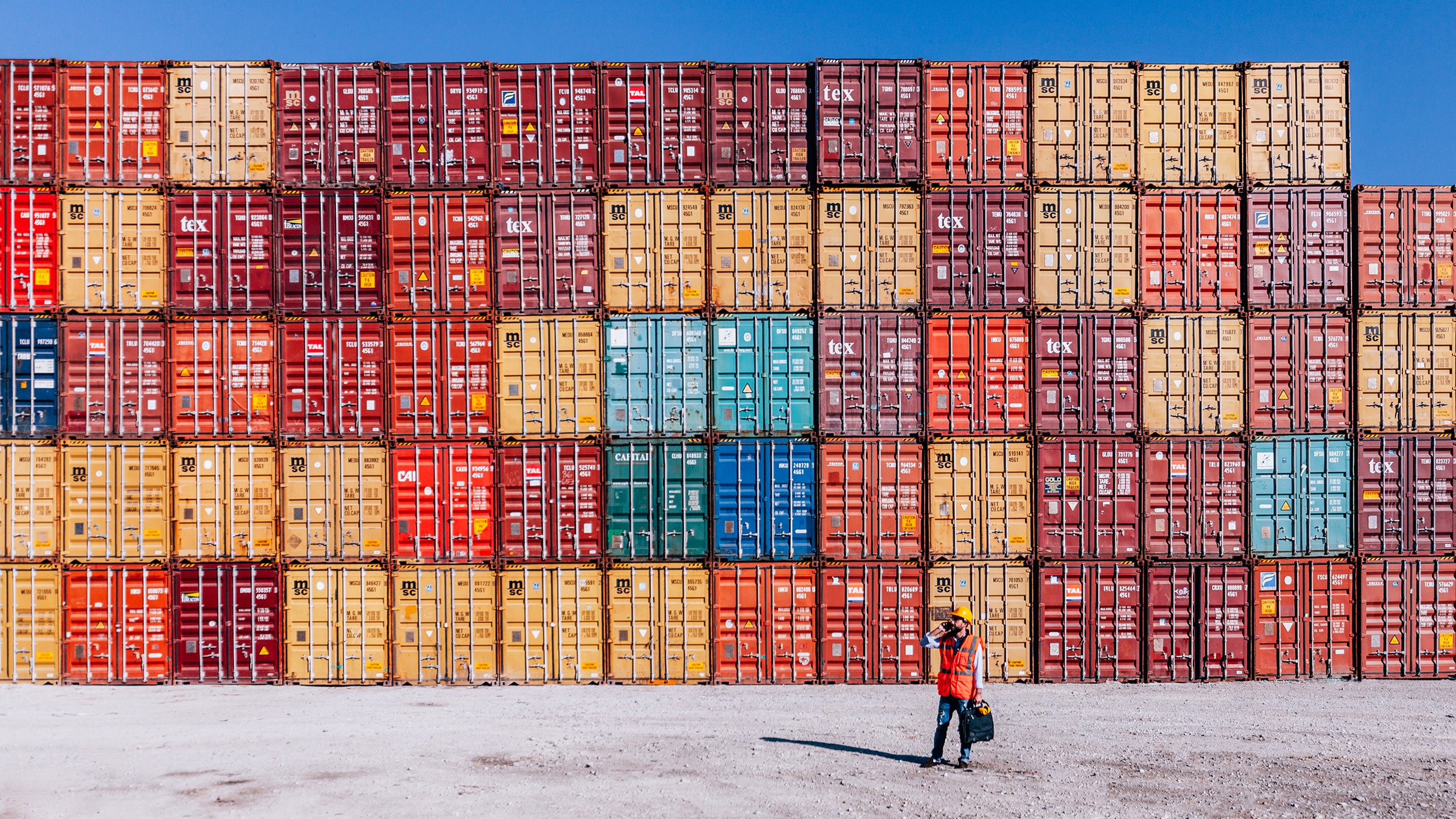
Will high tariffs push the US into recession?
As a trade war rages, a massive market sell-off in the US and around the world raises many questions for investors.

Divergence (among developed economies) and disinflation continue to be important themes in the second half of the year.
China has seen it’s ‘bottom’ in terms of growth and is now in recovery. Chinese inflows won’t necessarily impact Indian outflows though.
The US fiscal situation is likely to get worse whoever wins the election. But we could see greater trade tariffs under a Trump administration.
At the midway point of 2024, what will the second half of the year look like?
Inflation and interest rates continue to dominate headlines and hover over the economic and investment landscapes. Geopolitics have also been significant and technological innovations continue to play an important role.
While we can’t predict the future, we ask: Is it time to rethink, reset and refresh your view of the economic and investment landscapes?
Find out in our midyear investment outlook webinar, where Kristina Hooper and Paul Jackson from our Global Market’s Strategy office, discussed the significant economic and geopolitical events of the year so far.
And in a panel session chaired by Geoff Cutmore, former CNBC anchor and featuring members of our investment teams, spanning equities, fixed income, and private markets the market factors investors may want to consider going into the autumn and winter were examined.
Read our highlights from the event here, and you can also watch the full replay.
Paul Jackson - Global Head of Asset Allocation Research
Kristina Hooper - Chief Global Market Strategist
Tom Moore - Co-head of Invesco Fixed Income Europe
Raman Rajagopal - Senior Client Portfolio Manager, Private Credit
Shekhar Sambhshivan - Investment Director, Indian Equities
Raymond Ma - CIO, Hong Kong & China
Paul: think the two words I would use are divergence and disinflation. I think we're used to the idea that the US economy has been outperforming. It's been growing faster than many other economies in the world. However, although the US performed very strongly in the second half of last year, it seems to have slowed down in the first half of 2024.
If you look at Europe and China on the other hand, there seems to have been some acceleration. The divergence is not necessarily in the direction you might expect.
On the disinflation theme, I think that inflation is still coming down. We've had some data that has been disappointing. Inflation prints, especially in the US have been bit higher than expected.
But if you look at the background detail in the US, wage inflation has been falling for more than two years and that’s an important driver of core inflation. I think core inflation will keep coming down in the US and I think it's already done a lot of the downward journey in many parts of Europe.
Kristina: When the Trump administration announced significant tariffs in 2018, markets had a very visceral reaction, perhaps because we hadn't seen significant tariffs before.
Fast forward a few years and tariffs have become far more commonplace. We didn't see any rollback of the tariffs from the Biden administration when they took office. It's no longer rattling markets the way it did back in 2018.
Having said that, a future Trump administration would likely, based on what we've seen on the policy platform, enact much greater tariffs in some areas, particularly when it comes to China. We could get another visceral reaction, but I would guess that markets have become more desensitised to tariffs, given that we are about six years into a new trade environment.
Interestingly, I think the far more impactful policy, but perhaps in positive way is the industrial policy we're seeing. Individual economies are being very supportive of certain industries by supporting them with investment.
In 2023, about 70% of industrial policy came from developed countries and there’s been a big focus on semiconductors. We've seen it in China with the ‘made in China policy platform’ as well as the United States with the CHIPS Act and in South Korea. There's a lot of industrial policy going on that could be very impactful.
But the headlines will likely be around tariffs and ultimately, I think the biggest impact will be increased costs for consumers.
Kristina: It seems clear that there's a lot of potential here that we've already seen some productivity gains made in certain industries. For example, businesses like call centres have really benefitted from the use of artificial intelligence. We've seen it in studies on coding. There are many different applications, and it seems that we've only scratched the surface.
We could see very significant total factor productivity gains as artificial intelligence technology is adopted and invested in. Between 1995 and 2005, we saw the internet play a very significant role and improving total factor productivity, so I'm excited about the potential. Of course, there are also some concerns about AI, but in general, it looks to, at least in terms of productivity, have the potential to be a very significant positive force.
Raymond: We have seen the bottom already. In fact, November last year was the bottom for policy.
Ever since then we’ve seen more and more positive policies being issued. The real economy has been weak but as expected, resilience in exports will lead to a gradual recovery in China’s GDP.
Our portfolios have been positioned for growth. We’re looking for good growth companies. Specifically, we are focusing on two areas of growth.
The first area is about Chinese companies’ participation in re-globalisation or in other words, in the reorganisation of global supply chain. We’ve identified several companies that are expanding their market share globally as well as domestically.
The second trend is about what we call the ‘electrical revolution’ – new forms of energy that have emerged like solar and wind etc, as well as electric vehicles (EV). We’re seeing this from supply side and the demand side, as well as datacentres.
All this together puts very high demand on the grid. We see grid investment as a key investment for the next decade, so we’ve been picking stocks in this area as well.
Shekhar: Well, the short answer is, not so much. But your observation is right that in the last few months, we’ve witnessed close to about $3 billion that foreign investors as institutional costs have withdrawn out of the markets.
But look at it this way. In November 2023, India's market cap was close to about $4 trillion. Last week, it hit $5 trillion. So, despite the flows Raymond highlighted, the Indian market cap and the overall market has increased significantly in the last six months.
This has happened because of the emergence of a new, domestic investment class. We’re witnessing significant change, particularly on a structural basis, and so Indian domestic savers have begun funding equity or capital markets.
For any domestic player to participate, two things are needed. The first is a bank account and second is dematerialised (demat) account to participate in capital market. In around 2018 or 2019, pre-Covid, the total outstanding in demat accounts was close to about $30 million. Today this number is getting close to $160 million. That’s 5x in the last five or six years.
These are the new emergent, young Indians. They’re aspirational, they save less, invest more consume more. They’re the ones who are investing and perhaps providing liquidity. On its own, India will do well because awareness on both the global and local level has increased meaningfully in the last few years.
Tom: To the first question, we have not seen a politicisation of the Fed under the current regime. I think Jerome Powell would like nothing better than to cut rates, but they've held very firm on this subject and focused very much more on the inflation data than on labour markets. While it’s not a risk now, perhaps it could be in the future. It would depend very much on who the next governor was.
To the second question, the Biden administration has been far from stingy, so I think the US fiscal position is likely to worsen whatever happens in the election in November. At the same time, it's going to depend heavily on whether there’s a divided government in the US or not.
If Congress and the White House are controlled by different parties, it’s likely that there’ll be less spending. But if there’s a unified government (whichever party it happens to be) I think it probably has positive implications for economic growth. But I do not think that the US fiscal position is going to do anything but worsen over the next few years.
Raman: Historically, investors looking for higher returns in private markets focus a lot on opportunities, using private equity as an example. But broadly that asset class, is facing far more uncertainty given higher rates etc. In terms of opportunities that benefit from the macroeconomic environment, we’re seeing that there's a significant opportunity in the higher returning space of private credit.
Why? We’ve noticed that corporate borrowers, particularly smaller companies, they borrowed a significant amount of capital in a very different macroeconomic environment. Rates were far lower. Many of these companies were financing pre-COVID, and for smaller companies having to endure the macroeconomic challenges of COVID, rising input costs and then facing rising rates, they're in a situation where their capital structure is not really sustainable in the current world.
It means there’s significant opportunity for investors to provide recapitalisations of these businesses. The equity owners are essentially subsidising these positions. Through credit-like arrangements, investors have the chance to get to the high end of credit returns as well as equity-like returns, but with less downside risk.
We’re seeing a lot of interest in this capital solutions and special situation space. It’s a really interesting strategy in portfolios today among those seeking high returns.

As a trade war rages, a massive market sell-off in the US and around the world raises many questions for investors.

In our monthly market roundup for February, Invesco experts give a rundown of a mixed month for global equity markets, as well as an update on fixed income markets.

We assess what President Trump’s “Liberation Day” tariffs might mean for US and global markets, European and UK equities, and more.


Sign up to receive the latest insights from Invesco’s global team of experts and details about on demand and upcoming online events.
The value of investments and any income will fluctuate (this may partly be the result of exchange rate fluctuations) and investors may not get back the full amount invested.
Views and opinions are based on current market conditions and are subject to change.
This is marketing material and not financial advice. It is not intended as a recommendation to buy or sell any particular asset class, security or strategy. Regulatory requirements that require impartiality of investment/investment strategy recommendations are therefore not applicable nor are any prohibitions to trade before publication.
EMEA 3636870/2024